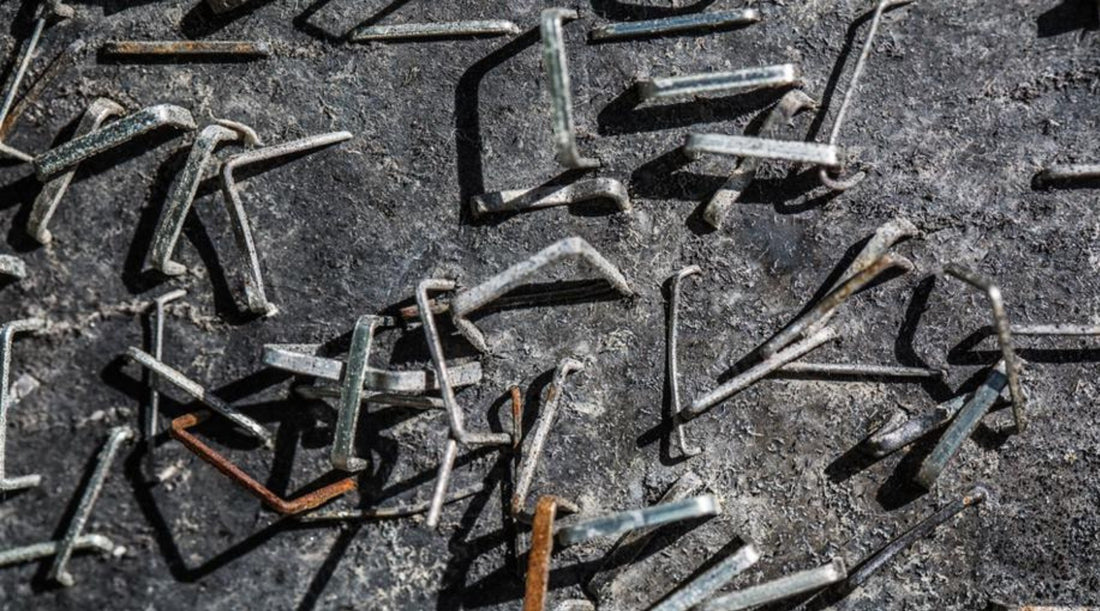Chuck here and no I didn’t mean the gaffer or anyone else here 😥 especially not the 2 lovely students from Keele University who have been working with us here for the last few weeks. Rather our collection of old staple and nail guns which decorate our reception area. (Chloe’s idea)
Anyway, back to our Keele folk... It seems that being with us here, has even made them in to staple and nail gun geeks too (no choice really when all they hear round here is air, electric and hand tool talk!) So with this in mind we asked them to find out about the history of the staplers and nailers. Firstly though see our old fossils – interesting only to some I know! We do have a giggle now and again when we get some customers who point to them and think these old 'uns' are the current products we supply.



Any way Zahra and Em Em found a very interesting fact about how Stanley Bostitch started off. Read ahead to see their findings:
Here’s some interesting history on the origin of staple and nail guns which we thought may catch your fancy!
The stapler has a history of longer than 130 years from unique designs and changes. If you define a stapler as a machine for fastening papers together, then, the earliest recorded stapler can be traced back to the 18th century in France where it was first used by King Louis XV. However, there were many controversies on what it was made of. Most acknowledged that it was made out of gold, and encrusted with precious stones to show royalty.
Below shows the first stapler which was invented in 1841, by Samuel Slocum, which was primarily produced for sticking pins into paper. His invention was however a packaging machine for sewing pins.

 The image on the left displays a 21st Century, battery powered Bostitch carton closing stapler. It can power more than 800 staples per charge which means even if it is in use on a packaging line or on the road the tool will stay in operation for the entire day.
The image on the left displays a 21st Century, battery powered Bostitch carton closing stapler. It can power more than 800 staples per charge which means even if it is in use on a packaging line or on the road the tool will stay in operation for the entire day.
Interesting fact: Stapler collecting has become a trend! Muriel Fahrion, an American illustrator and designer from Oklahoma collects vintage staplers. This hobby began with first becoming captivated by the EM230 Paris Agrafeuse. Her hobby developed and she now holds more than 50 diverse staplers! Her interest in this hobby has been featured in a book called Stapler Fasten Nation which profiles 36 pages of colour photographs of staplers.
The nail gun was an invention that came many years after the first stapler was been  invented, in fact nearly 100 years after the first stapler was produced.
invented, in fact nearly 100 years after the first stapler was produced.
 Nail guns were first manufactured in the 1954 by three construction workers from New York. Through world war two the workers learnt how to use machine guns and this is what created the groundwork for their revolutionary idea. Their idea proposed that an automatic nailer would be able to operate similarly to a machine gun. After their nail gun was designed they went round the country to try and find investors who would invest in them. The process of the first nail gun was to exert air pressure to assist the building of housing floor surfaces. The original gun could be used whilst standing and the gun would pin up to 60 nails in one minute.
Nail guns were first manufactured in the 1954 by three construction workers from New York. Through world war two the workers learnt how to use machine guns and this is what created the groundwork for their revolutionary idea. Their idea proposed that an automatic nailer would be able to operate similarly to a machine gun. After their nail gun was designed they went round the country to try and find investors who would invest in them. The process of the first nail gun was to exert air pressure to assist the building of housing floor surfaces. The original gun could be used whilst standing and the gun would pin up to 60 nails in one minute.
However, due to the workers lack of marketing expertise they were unable to sell their first nail gun, so; instead they sold their idea to Bostitch.
Just for interest we put together this Infograph based on the history of the staple gun:

Hope you found this of some interest, we didn’t realise how much there is to all this stapling and nailing industry.
Kind Regards From
Zahra and Mubarak (Em Em)
A reminder of where we are:https://mytoolkit.co.uk/
Some customer favorites:
For more Stapling and Nailing news, enter your details here so you'll never miss an update!


1 comment
hi there what you want